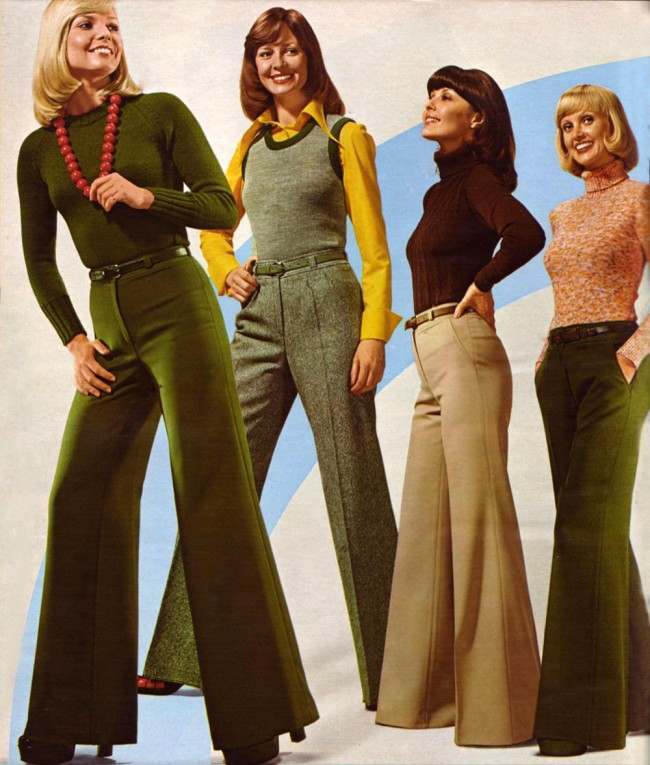
OTHER than a brief Capri pants fad during the early Sixties, women rarely wore pants in public. It was dresses and skirts only. Then the Women’s Liberation movement hit its stride in the Seventies, and the ladies started to get in on the pants action. Just as the miniskirt had been a proclamation of the youth culture, pants became a proclamation of gender equality. If men can wear hideous corduroy bell-bottoms, by God, the women can too!
Yes, it was unfortunate that this new-found fashion liberation landed smack dab in the Seventies – a time not known for its exemplary taste in attire. Indeed, women started jumping into slacks at time when they were high waisted, butt-hugging, and ultra-flared at the bottoms. Men wanted the miniskirt back, but it was too late. Trousers were in, and there wasn’t a damn thing anyone could do about it.
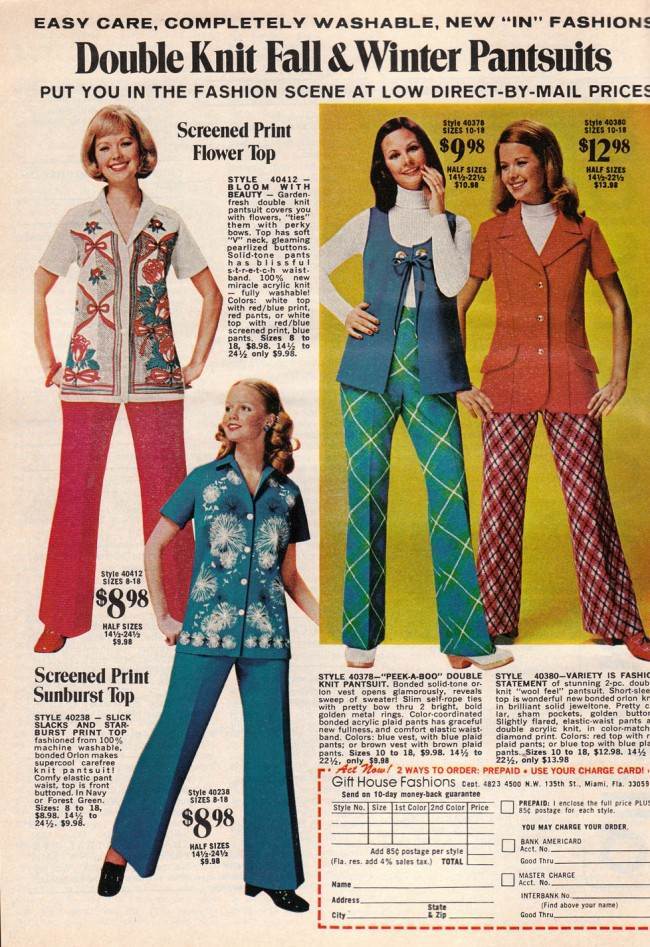
What’s the only thing worse than a pair of ‘70s polyester pants? The answer: the dreaded pantsuit. These highly unflattering slacks had an elastic waistband that was so high, it nearly reached the armpit. The addition of a matching top only made things worse. The pantsuit was perhaps the low-watermark of the decade, followed closely by Vietnam and Watergate.
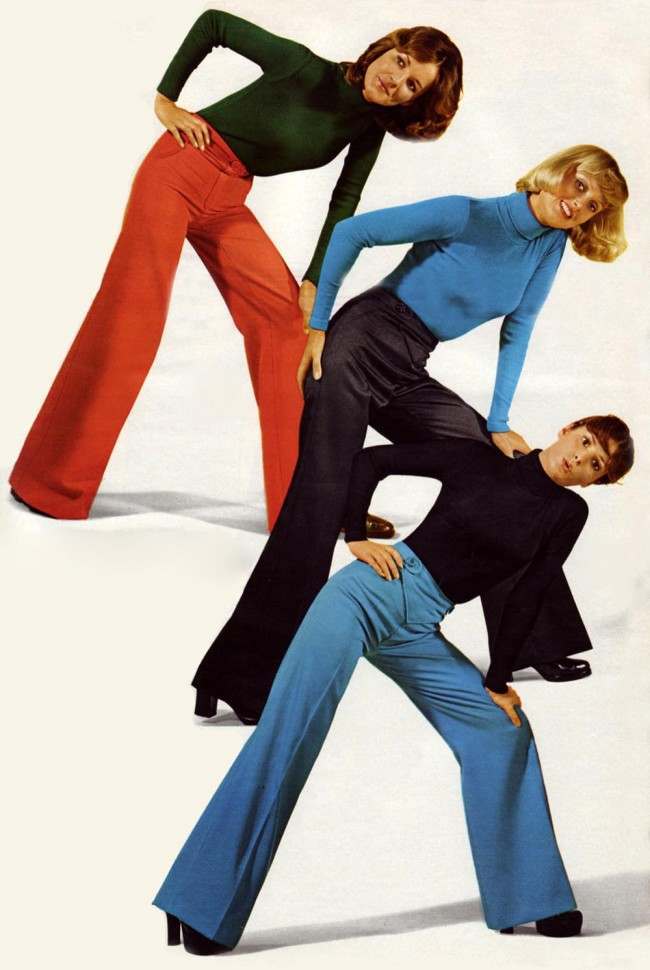
You’ll note that women generally wore platforms or wedges, otherwise their feet would be completely lost beneath the umbrella of the bell bottom. Many of you may recall the tremendous amount of static electricity generated by bell bottom cuffs grazing the carpet as you walked. You could shock the hell out of your friends by simply touching them with your finger.
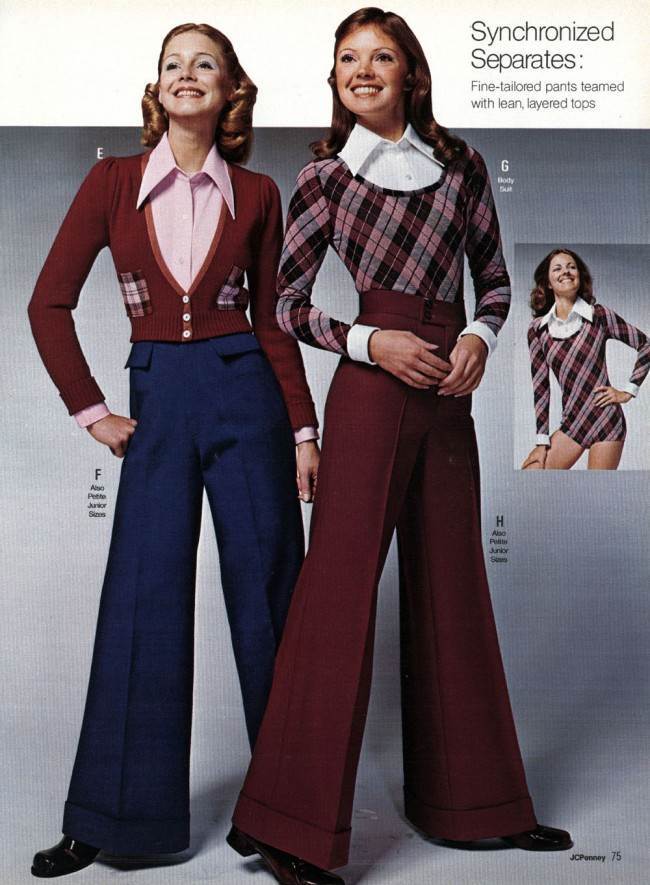
You’ll also recall that the shirts were never untucked, and since the style was both high-wasted and ultra-tight up top, this presented problems. A tucked-in shirt would be painfully obvious bunched-up underneath; with unpleasant looking wrinkles and bumps in the ass area. What to do? The answer is in the picture insert above: “bodyshirts”.
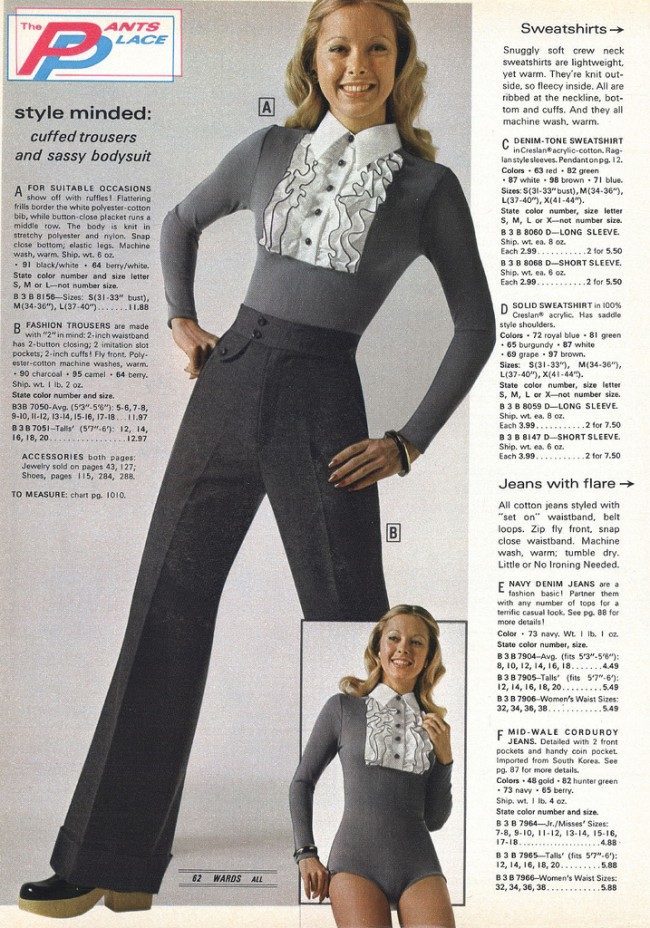
The bodyshirt wasn’t some strange and rare ‘70s anomaly; those of you who lived it can attest that bodyshirts were commonplace. So, to review: the advent of chick pants necessitated two fashion adaptations – (1) the platform shoe to cope with the bell-bottoms and (2) the bodyshirt to cope with the ass-hugging high-waistline. I’m inclined to think sticking with dresses might’ve been a whole lot easier.
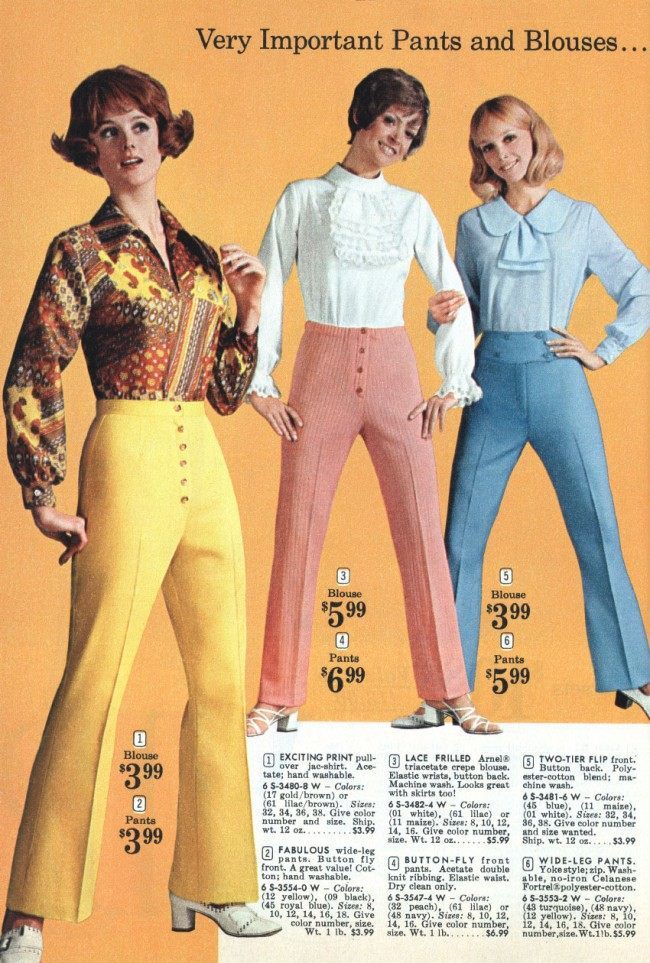
I happen to love ‘70s fashions, but there’s a limit to what I can handle. This page from a 1970 catalog illustrates my tipping point, where I’m no longer on board with ‘70s styles. How in the name of all that is holy was this ever considered attractive? Or am I just missing the point altogether – that this was a statement of gender equality, and the less attractive it looked, the better. If so, they succeeded handily.
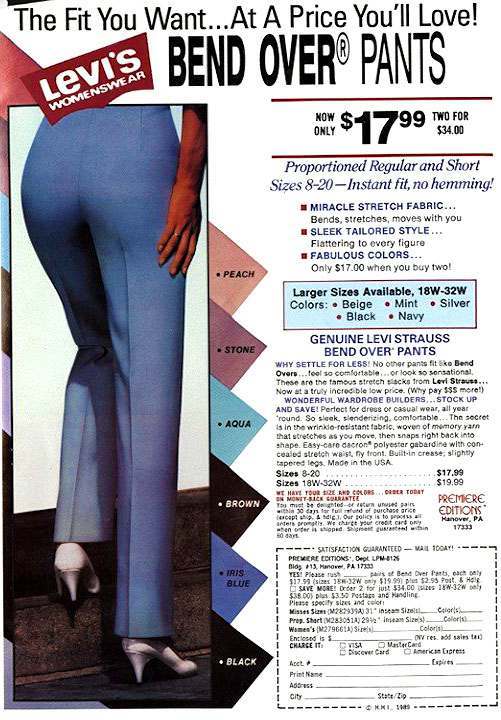
Form-fitting polyester isn’t very forgiving when it comes to tracing the contour of a backside. You’re going to need all the help you can get erasing even the slightest pantyline or dimple. Pray the “Easy-care Dacron polyester gabardine” keeps things smooth.
Or you could just go with black, the great concealer…
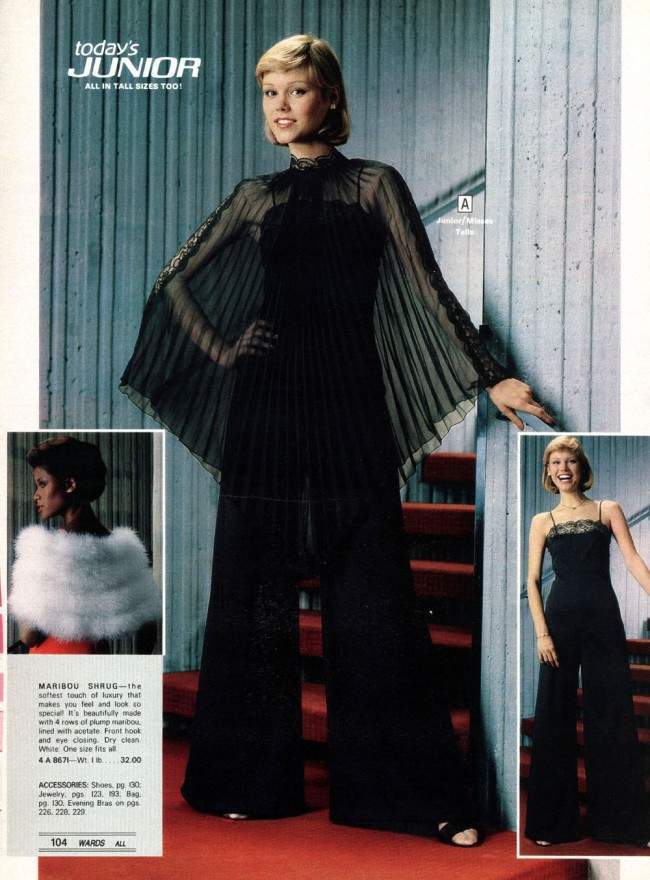
But let’s not get carried away. Wear this number in public and you’re in danger of being mistaken for a superhero of some kind. Although, I wouldn’t recommend fighting crime in open-toed shoes.

“Cling of bodysweater
Flare of pants –
Wow, what a great look!”
Sadly, the fashions soon spread to all age groups. What started as a progressive fashion statement soon became a shame for the whole family to bear. Of course, I’m no fan of today’s baggy pants either, so perhaps it wasn’t so bad.
….Okay, it really was bad. There’s no sugar-coating it. ‘70s chick slacks were freaking awful….. ‘70’s chick jeans on the other hand were divine.
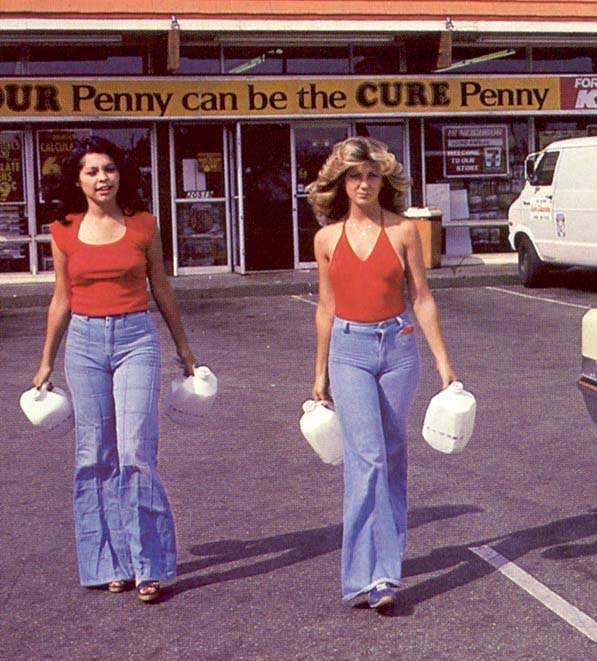
This is like a wet dream for the lactose tolerant. All the horrific trademarks are there: form fitting, high-waisted with huge flares. Yet, all is forgiven. Like the country singer, Conway Twitty, was wont to declare: “Lord I love that lady wearin’ tight fittin’ jeans.”
THE ENDS
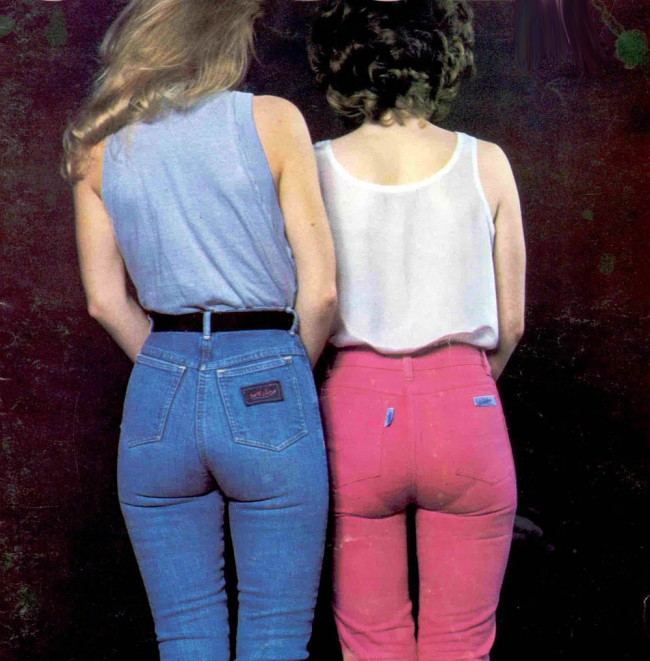
Would you like to support Flashbak?
Please consider making a donation to our site. We don't want to rely on ads to bring you the best of visual culture. You can also support us by signing up to our Mailing List. And you can also follow us on Facebook, Instagram and Twitter. For great art and culture delivered to your door, visit our shop.

